
Euskadi together with Navarre and the Northern Basque Country (Iparralde) form a historic and cultural reality known as Basque Country. In early times, it was called Vasconia or Euskal Herria (as always said in the Basque language). The political representations of this reality over times were the Duchy of Vasconia and the Kingdom of Pamplona-Nájera. Today, the Basque Country is divided into two states, France and Spain and inside the Spanish state, it is divided as well into two autonomous communities: Euskadi and Navarre.
The Autonomous Community of Euskadi has 2,184,606 inhabitants (year 2011) and covers 7,089 square kilometres. It is the western Basque Country, which includes the foral provinces or historic territories of Araba (Álava) Bizkaia (Biscay) and Gipuzkoa (Guipúzcoa). Euskadi is also called Basque Autonomous Community (Comunidad Autónoma Vasca, CAV), or Euskal Autonomi Erkidegoa (EAE, as said in Euskara).
The administrative capital of Euskadi is Vitoria-Gasteiz, where the Lehendakari (president) of the Basque Government (Eusko Jaurlaritza) resides, as well as the Basque parliament (Eusko Legebiltzarra) and the main institutions that are common to the three western Basque regions. Euskadi has the highest level of autonomy from any European governed sub-entity. There is a great level of technological and economic development as well as quality of life. 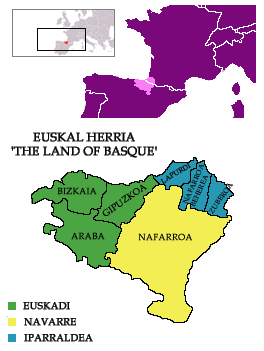
According to the euro convergence criteria, being 100 the average rate, in the year 2004 the Autonomous Community of Euskadi obtained a rate of 112.98, what means that the European average in economic development was exceeded by 12.98 points. The Autonomous Comunity of Madrid (the region that includes the capital of Spain) obtained 114.85 points. Therefore, Euskadi was the second autonomous community of Spain, and remained 49th from the existing regions of the European Union concerning the GDP per capita, while Madrid was 32th.
By means of its continuous economical expansion, Euskadi increased its GDP and reached a rate of 140.6 points in 2007, what meant that in comparison to the states of the European Union, Euskadi would have ranked third that year after Luxembourg (276.4) and Ireland (146.3). The countries like the Netherlands (130.9), Switzerland (128.2), Sweden (126.2), Denmark (122.8), Belgium (118.1), Finland (116.2), United Kingdom (116.2), Germany (113.2), France (111.3) and Spain (106.9) would have been placed after Euskadi. Another feature of the Basque economy is reflected in the high quality of its production. Due to this concept of excellence, it is worth mentioning that Euskadi is the European region with most business and educational institutions awarded by the European Union in proportion to its population.
In practice, Euskadi is a semi-independent entity and has their own taxation, financial, health, education and police systems, among others. It works in turn as a confederation of foral communities. For this reason, each western Basque region has 25 Members in the Basque parliament regardless of the number of inhabitants of each territory. For instance, Biscay (1,152,658 inhabitants) almost quadruples the population of Álava (319,227 inhabitants), so that a vote for the Basque Paliament in Alava is worth four times more than a Biscayan vote.
Each province or foral territory, which has its own identity since the Middle Ages, has a constitution or fuero (Forua, as said in Euskara) since that time although with periods of prohibition or reductions in self-government according to the different situations of the Spanish policy. Besides, each one has in turn its parliament or General Council (Biltzar Nagusia) and a president called 'Aldun Nagusia' (chief councillor). As we can see, the Forua is one of the very first democratic political systems of Europe and also enjoys a high level of autonomy and decision-making power. The Basque self-government is mostly managed by each of the western territories and therefore, the decentralization of the Basque institutional structure is remarkable. The Autonomous Community of Euskadi is based on the free union of the Basque historic territories, so that each one has the right to join Euskadi or to separate from it when appropriate and the Basque Government coordinates the three foral regions.
With regard to the use of Euskara, 25.2% of the population in Euskadi is Basque-speaker (530,000 inhabitants); 16.3% understands it, but cannot speak it (344,000 inhabitants) and the remaining 58.5% is only Castilian-speaker (1,230,000 inhabitants), according to the records of 1996.
For more information about the Basque institutions, economy, taxation, education, tourism, etc, please visit the website of the Basque Government
Araba: This historic region is called Álava in Spanish. It has 2,963 square kilometres and 319,227 inhabitants (year 2011). During the pre-Roman ages, its population was made up of the following Basque tribes: Autrigones, Caristii, Varduli and Vascones. 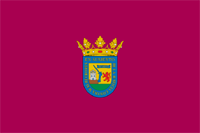
In the Middle Ages, the southern area of Álava belonged to the Andalusi upper march that was ruled from Zaragoza. This fact allowed the culture of the Ebro riverbank, known today as Aragonese culture, to arrive in this Basque-speaker territory. Although the Aragonese language is no longer spoken, the Aragonese dialect of Castilian is still used in the area today since it arose from the absorption of the Aragonese language by Castilian.
The name 'Álava' comes from the medieval Basque term 'laba', which meant 'the plain'. The epenthetic vowel /a/ was added to the word just to make its pronunciation easier, what led to the term 'Alaba'. The above-mentioned term 'Laba' (the plain) becomes 'Lau' (plain) without its article which in turn is a Basque adaptation of the Latin word 'planus' (plain). In the Basque language, the soft /l/ evolved to /r/ and therefore 'Alaba' became 'Araba' while Castilian kept the medieval Basque written form 'Álava'. In Euskara, the territory has also been named as Araba-herria or Alaba-herria (this last term was the form used by the Basque writer Axular in the 16th century that means 'plain land').
|
Historic Territory |
Araba |
|
Year |
2001 |
|
Employees |
129.254 |
|
Primary Sector |
3.962 |
|
Industry |
50.468 |
|
Services |
74.824 |
|
Employed (%) |
100 |
|
Primary Sector (%) |
3,1 |
|
Industry (%) |
39,0 |
|
Services (%) |
57,9 |
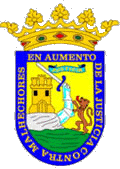
Today, the northern area of Álava is the only place of the territory that still keeps the western dialect or Biscayan dialect of Euskara. It was spoken in the Middle Ages in a larger area that comprised the north of the province of Burgos, Álava, La Rioja, Soria, Biscay and in the border area between Guipúzcoa and Biscay. At present, Castilian is spoken in the middle area of Álava and in the southern area, mainly in the Rioja Alavesa, it is spoken the Aragonese dialect of Castilian.
According to the records of 1996, 7.8% of the population (22,000 inhabitants) speaks Euskara, 14.6% understands it, but cannot speak it (42,000 inhabitants) and the remaining 77.6% only speaks Castilian (222,000 inhabitants).
The capital of Álava is:
* Gasteiz (Basque form)
* Vitoria (Castilian form)
For more information about the territory, please visit the website of the Provincial Council of Álava
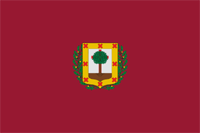 Bizkaia: The Spanish denomination is Vizcaya (Biscay). It has 2,217 square kilometres and a population of 1,152,658 inhabitants (year 2011). The territory comprises the northern area of the ancient pre-Roman tribes of the Caristii and Autrigones.
Bizkaia: The Spanish denomination is Vizcaya (Biscay). It has 2,217 square kilometres and a population of 1,152,658 inhabitants (year 2011). The territory comprises the northern area of the ancient pre-Roman tribes of the Caristii and Autrigones.
The meaning of the term 'Bizkaia' is 'summit' and was a very common term in the past. Now it is used the term 'bizkar' (summit, hillock) instead of the word 'bizkai' which represents an archaism. There is a reference to the top of the mount Igeldo in San Sebastián (Guipúzcoa) which dates back to 1141, where there is written the following place-name: Iheldo Bizchaya ('summit of Igeldo'). There is also a Navarrese region that is known as 'La Vizcaya', which refers to 'the summit' as well.
|
Historic Territory |
Bizkaia |
|
Year |
2001 |
|
Employees |
446.785 |
|
Primary Sector |
7.481 |
|
Industry |
147.430 |
|
Services |
291.874 |
|
Employed (%) |
100 |
|
Primary Sector (%) |
1,7 |
|
Industry (%) |
33,0 |
|
Services (%) |
65,3 |
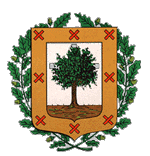
The Autrigones lived in the territory that was demarcated by the left bank of the Nervión river in Bilbao to east, the river Asón of Cantabria to west and part of Burgos and Álava to south. Their neighbours, the Caristii, extended to eastern areas from the right bank of the Nervión to the Deva river in Guipúzcoa (it flows 13 kilometres far from the current border between Biscay and Guipúzcoa) and southwards to a large part of Álava.
The western dialect of Euskara is also spoken in this area, the same as in Álava. In fact, it is known as Biscayan dialect
This western dialect differs from the other Basque dialects in its deep archaism. The arrival of Christianity and the proximity of the Caristii to the Basque tribe of the Autrigones that were being romanized (this process would give rise to the Castilian people) had much impact on western Euskara. Thus, the current speakers of this dialect (Alaveses and Biscayans) are the ones that most terms of Latin origin use in their daily speech in comparison to other dialects. As an example of this, there is the term 'berba' (word), which derives from the latin term 'verbum' (word).
At present, Castilian is mainly spoken in the urban and industrial areas, as a consequence of the arrival of Castilian-speech immigrants in the Biscayan industry. However, as early as the 18th century, the Basque language was no longer spoken in Bilbao since this city was an important port of Castile, and later of Spain, in the trade relationship with Europe. For this reason, many Castilian traders settled in Bilbao and Castilian gradually became the daily language of the city.
According to the records of 1996, 18.1% of the Biscayan population is Basque-speaker (206,000 inhabitants); 18.4% understands it, but cannot speak it (210,000 inhabitants) and the remaining 63.5% (723,000 inhabitants) only speaks Castilian.
The capital of Biscay is:
* Bilbo : in its Basque form
* Bilbao: in its Castilian form
For more information about the territory, please visit the website of the Provincial Council of Biscay
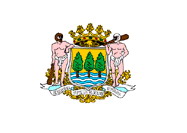 Gipuzkoa: The Spanish denomination is Guipúzcoa. It has 1,809 square kilometres and a population of 709,607 inhabitants (year 2011).
Gipuzkoa: The Spanish denomination is Guipúzcoa. It has 1,809 square kilometres and a population of 709,607 inhabitants (year 2011).
During the Roman age, the territory was inhabited by the Basque tribe of the Varduli. According to some etymologists, the term Guipúzcoa is one of the few pre-Roman toponyms that was able to survive the passing of time since Vardulia (the name that the Celts gave to the territory of this tribe, also Bardulia) and Gipuzkoa mean the same: 'borderland'.
|
Historic Territory |
Gipuzkoa |
|
Year |
2001 |
|
Employees |
295.110 |
|
Primary Sector |
5.382 |
|
Industry |
117.436 |
|
Services |
172.292 |
|
Employed (%) |
100 |
|
Primary Sector (%) |
1,8 |
|
Industry (%) |
39,8 |
|
Services (%) |
58,4 |
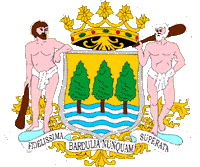 The dialect of Guipúzcoa or Central dialect is like a bridge between Biscayan or Western dialect and the eastern dialects, although it keeps more similarities with the last ones. This dialect is currently spoken in the central area of Guipúzoa as well as in the northwest of Navarre. Besides, we must remember that the Western dialect is spoken from the Biscayan border to the Deva river, as stated before, and the Navarrese-Labourdin dialect that is spoken in the far northeast of Guipúzcoa.
The dialect of Guipúzcoa or Central dialect is like a bridge between Biscayan or Western dialect and the eastern dialects, although it keeps more similarities with the last ones. This dialect is currently spoken in the central area of Guipúzoa as well as in the northwest of Navarre. Besides, we must remember that the Western dialect is spoken from the Biscayan border to the Deva river, as stated before, and the Navarrese-Labourdin dialect that is spoken in the far northeast of Guipúzcoa.
This is the peninsular territory with the highest number of Basque-speakers, while Castilian is mainly spoken in the capital and industrial areas.
According to the records of 1996, 44.4% of the population of Guipúzcoa speaks Euskara (302,000 inhabitants); 13.5% understands it, but cannot speak it (92,000 inhabitants) and the remaining 42.1% only speaks Castilian (285,000 inhabitants).
The capital of Guipúzcoa is:
* Donostia : in its Basque form.
* Donosti : in its colloquial Basque form.
* San Sebastián : in its Castilian form.
For more information about the territory, please visit the website of the Provincial Council of Guipúzcoa
Share this page!


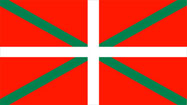
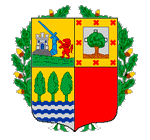


 Bizkaia: The
Bizkaia: The 
 Gipuzkoa: The
Gipuzkoa: The  The dialect of Guipúzcoa or Central dialect
The dialect of Guipúzcoa or Central dialect